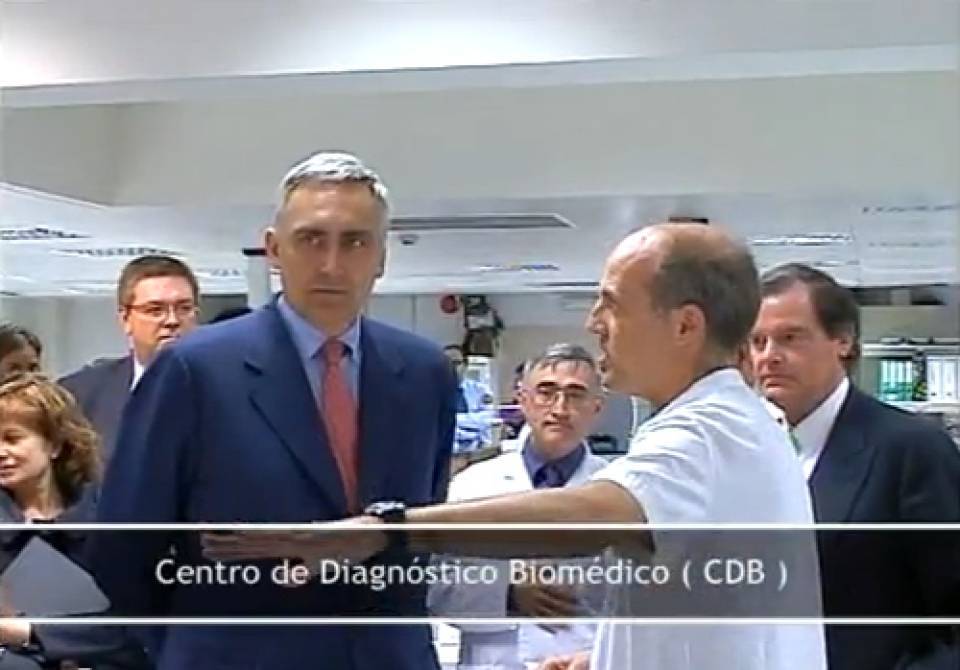Peter Löscher, Chief Executive Officer of Siemens, visited some of the most innovative diagnostic facilities of Hospital Clínic, Barcelona and met with the hospital’s board of directors. His presence strengthened the cooperative links between the two institutions and confirmed the scientific importance of the Catalan hospital for the German company. The priority of Hospital Clínic, Barcelona, as a reference hospital in patient care, teaching, research and innovation, is the quality of care provided to its patients. Agreements with companies in the biotechnology and pharmaceutical industries are essential today for achieving the top priority: providing patients with innovative diagnostic systems that ensure the quality and safety of their cures. “ We want to continue to cooperate with hospitals that have shown excellence in their chosen fields. And Hospital Clínic is a good example of this”, said Löscher.
The latest milestone was announced by the two institutions in December, with the creation of a system that integrates laboratory diagnostics (in vitro), imaging (in vivo) and IT systems. The new system provides faster, safer and earlier results. With this level of technological resources, the hospital has become a unique international reference hospital in the application of in vivo and in vitro technology in health care, from prevention and early detection to the diagnosis, threatment and cure of patients. The first lines of work are in the area of fetal medicine, hepatology and gastroenterology. Löscher stated that “we are very proud of our agreement with Hospital Clínic, which allows us to be pioneers at world level in the combination of in vivo and in vitro diagnostic technologies”.
The Clínic’s Biomedical Diagnostic Center (CDB) is also equipped with the latest Siemens technology. This center hosts the CORE Laboratory, which is fully automated and equipped with state-of-the-art systems; its central pillar is a system that performs comprehensive management of the samples and to which analyzers of different specialties and using different technologies can connect. It is the longest chain of integrated laboratories in Europe and the second longest in the world. The system includes modules for loading, unloading, identifying, centrifuging and classifying samples, thereby allowing total traceability of the samples and real-time control of all the analytical processes.
Siemens also provides almost all the technological infrastructure of the Hospital Clínic Diagnostic Imaging Center, which holds part of the Stroke Functional Unit. With this, Hospital Clínic hopes to reaffirm itself as a center of innovation and excellence, as the organizational structure focusses on the patients and their disease in order to improve circuits and simplify the comprehensive approach. The new unit provides multidisciplinary care and advanced technology for the diagnosis and treatment of stroke and its complications. This initiative, which has been in operation for 6 months, uses diagnostic imaging techniques such as CT scans, magnetic resonance imaging, angiography and endovascular treatment such as stents, protective balloons, angioplasty and intra-arterial therapy. The unit, which has a neurosurgery service and monitoring systems, combines the current hospital units with more innovative technological and therapeutic resources. All this technology has one aim: to provide the best possible information to allow health care personal to make faster and safer decision.

